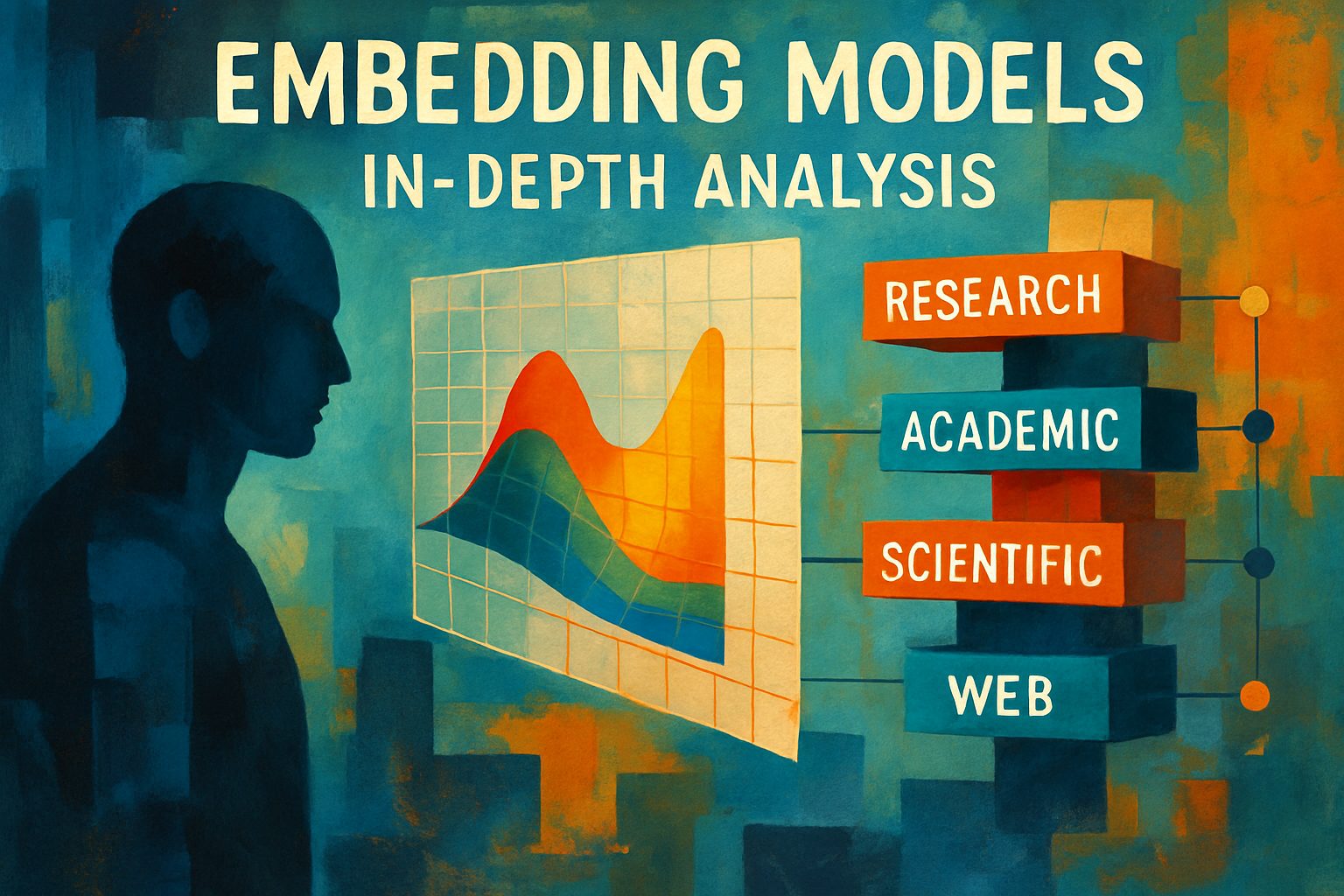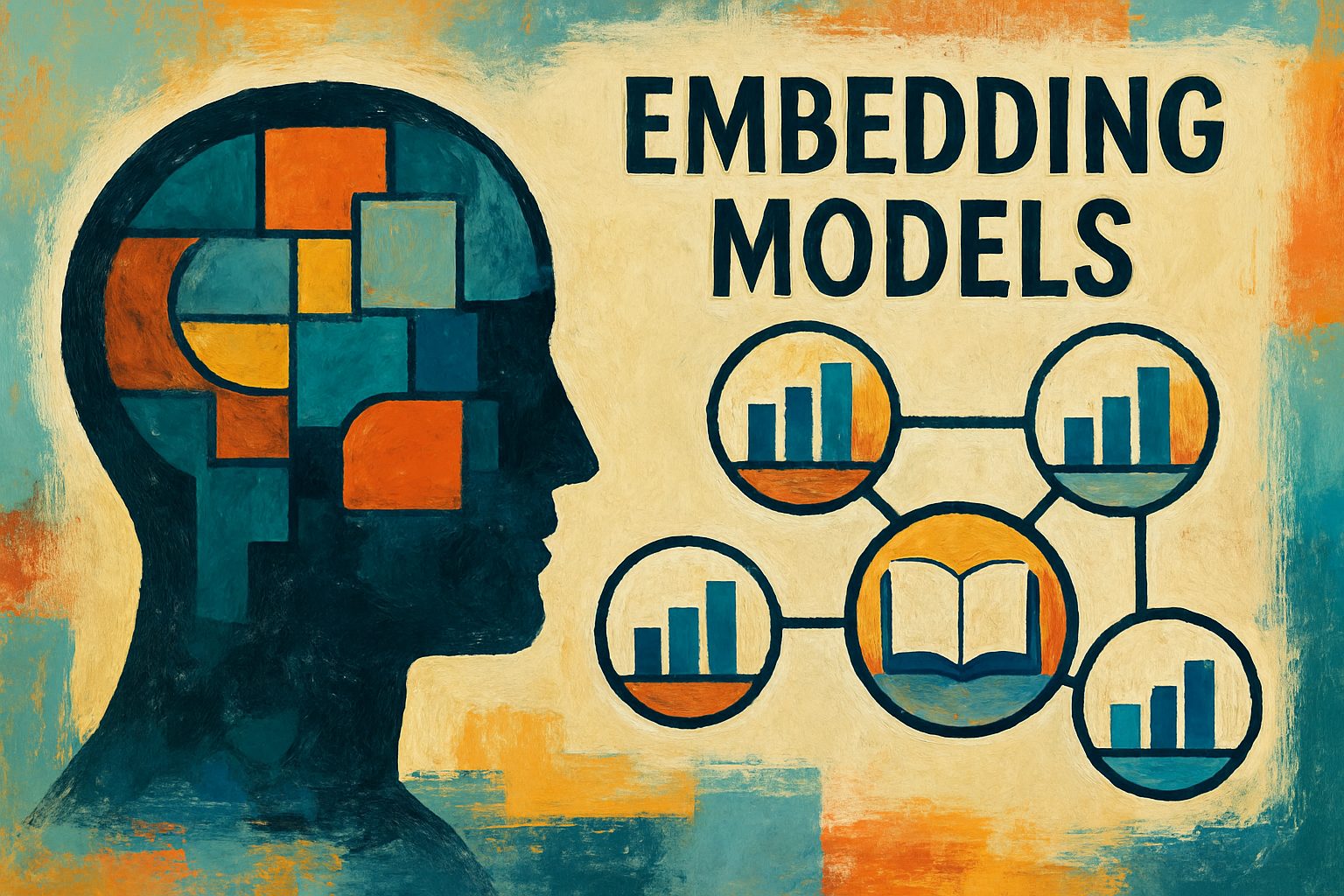
Unlocking the Power of Local Embedding Models: A Comprehensive Comparison
Dive into the world of embedding models with our in-depth analysis, comparing various research, academic, and scientific options for local deployment. Discover the trade-offs between privacy, cost, and performance as you explore the best models for your needs.
This comprehensive analysis explores Compare various research, academic, scientific, and web embedding models that exist and can be utilized locally., based on extensive research and multiple data sources.
Below is a comprehensive research background that compares various research, academic, scientific, and web embedding models—many of which are suitable for local deployment. This analysis provides a foundational understanding, weighing the benefits and challenges of different approaches while drawing on multiple reputable sources.

Thesis: Embedding Models and Their Local Deployment Tradeoffs
Embedding models have become a cornerstone for modern artificial intelligence applications including retrieval augmented generation (RAG), search, and classification. With both proprietary and open‐source options available, a key question emerges: Which models best serve research, academic, and local deployment needs? Local models promise enhanced privacy, lower latency, and cost control, but often trade off the ease of cloud-based API integrations. The following sections provide a deep dive into these tradeoffs.
Evidence & Key Facts
What Are Embedding Models?
Embeddings are numerical representations that translate complex, high-dimensional
Below is a detailed research analysis comparing various research, academic, scientific, and web embedding models that can be utilized locally. This analysis covers the thesis, evidence, critical evaluation, and analytical reasoning to weigh the pros and cons of different embedding approaches. We also include structured comparisons and a Plotly visualization example for enhanced clarity.
Thesis & Main Argument
The rapid evolution of embedding models—from proprietary solutions like OpenAI’s text-embedding-3 to emerging open-source options such as Stella and ModernBERT Embed—requires researchers and practitioners to balance accuracy, computational cost, latency requirements, and local deployability. This analysis argues that while commercial embedding models often provide state-of-the-art performance, academic and open-source models give a viable alternative when local deployment without heavy API dependencies or cost barriers is needed.
In essence, local utilization is not only about performance, but also about flexibility, privacy, and resource management.
Key Evidence and Factual Information
Overview of Embedding Models
Embedding models convert data into continuous numerical representations that capture semantic and syntactic properties. According to AWS on embeddings, these models are essential for tasks such as:
- Reducing data dimensionality: Transforming high-dimensional information into low-dimensional vectors.
- Facilitating similarity searches: Comparing diverse data types (such as textual, graphical, or audio data) through semantic similarity.
- Enhancing retrieval and classification: Improving accuracy by leveraging underlying relationships among data elements.
Recent comparisons—as seen in DataStax’s blog and Pinecone’s rundown—demonstrate that models like Voyage-3-large, Gemini text-embedding-004, and open-source alternatives (e.g., Stella, ModernBERT Embed) have distinct tradeoffs in terms of cost, speed, and scalability.
Academic vs. Commercial Models
- Commercial models (e.g., OpenAI, Cohere, Gemini) are often optimized for high accuracy, are frequently updated, and come with extensive documentation and support. However, they typically involve API calls that may be subject to cost and rate limits.
- Academic/Open-source models (e.g., Stella, ModernBERT Embed) are accessible for local deployment and fine-tuning. They allow researchers to conduct controlled experiments and reduce dependency on cloud services. Their performance, though rapidly advancing, might lag behind in certain benchmarks compared to proprietary models—but they offer attractive cost and customization benefits.
“The open source Stella model represents incredibly impressive work from its author, Dun Zhang. After dropping the Stella model like a bomb on HuggingFace, the model has become a robust option for local and fine-tuned applications.” – DataStax
Scientific and Web Embedding Models
When considering web embedding models, the focus shifts to models that
Vyftec – Research and Analysis Models
Unlock the power of local academic and web-embedded research with our AI-driven solutions. Experience Swiss quality in project execution—let’s elevate your research endeavors together!
📧 damian@vyftec.com | 💬 WhatsApp


